-
 Bitcoin
Bitcoin $107,602.2304
-0.02% -
 Ethereum
Ethereum $2,447.3964
1.65% -
 Tether USDt
Tether USDt $1.0002
-0.01% -
 XRP
XRP $2.1366
-2.92% -
 BNB
BNB $644.0774
-0.17% -
 Solana
Solana $142.8336
-1.81% -
 USDC
USDC $0.9998
-0.01% -
 TRON
TRON $0.2717
-0.01% -
 Dogecoin
Dogecoin $0.1599
-2.69% -
 Cardano
Cardano $0.5558
-3.30% -
 Hyperliquid
Hyperliquid $37.7611
-0.60% -
 Bitcoin Cash
Bitcoin Cash $492.4270
2.94% -
 Sui
Sui $2.6401
-5.08% -
 Chainlink
Chainlink $13.0708
-0.39% -
 UNUS SED LEO
UNUS SED LEO $8.9954
-0.11% -
 Stellar
Stellar $0.2360
-2.86% -
 Avalanche
Avalanche $17.2948
-2.57% -
 Toncoin
Toncoin $2.8116
-2.05% -
 Shiba Inu
Shiba Inu $0.0...01127
-2.82% -
 Litecoin
Litecoin $84.4846
-0.15% -
 Hedera
Hedera $0.1450
-4.73% -
 Monero
Monero $313.5195
-1.68% -
 Dai
Dai $0.9998
0.00% -
 Ethena USDe
Ethena USDe $1.0000
-0.03% -
 Polkadot
Polkadot $3.3074
-2.73% -
 Bitget Token
Bitget Token $4.4402
1.32% -
 Uniswap
Uniswap $6.8127
-2.37% -
 Pi
Pi $0.5561
-13.81% -
 Pepe
Pepe $0.0...09262
-5.93% -
 Aave
Aave $253.3029
-1.99%
Can the head and shoulders bottom pattern really catch the reversal? How to confirm the neckline breakthrough?
The head and shoulders bottom pattern signals a potential bullish reversal in crypto, confirmed by volume surge and neckline breakout.
Jun 26, 2025 at 10:49 am
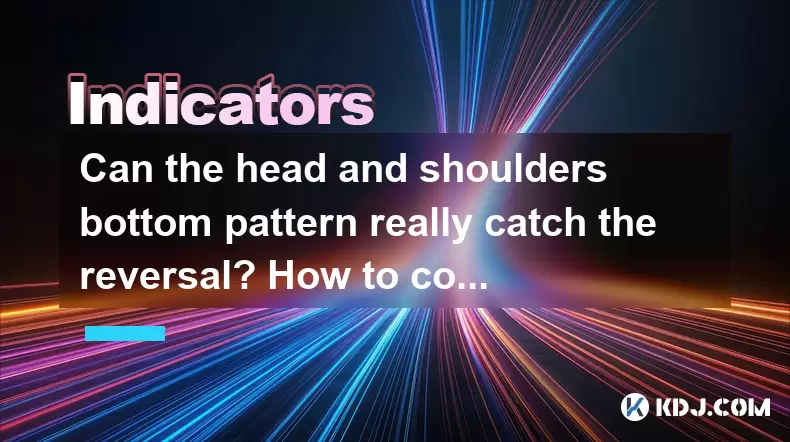
Understanding the Head and Shoulders Bottom Pattern in Cryptocurrency Trading
The head and shoulders bottom pattern, also known as the inverse head and shoulders, is a reversal chart formation commonly used by traders to identify potential bullish reversals in cryptocurrency markets. This pattern typically appears at the end of a downtrend and signals that the selling pressure has weakened and buying momentum may soon take over.
In this setup, there are three distinct lows — the left shoulder, the head (the lowest point), and the right shoulder (which is usually symmetrical with the left). These lows are connected by a horizontal or slightly sloping line called the neckline. The key to interpreting this pattern lies in how price interacts with this neckline.
Important: While this pattern can be highly effective, it should not be relied upon in isolation. It must be confirmed using volume analysis and price action.
How to Identify the Components of the Inverse Head and Shoulders Pattern
To effectively utilize this pattern, traders need to correctly identify its components:
- Left Shoulder: This forms after an extended downtrend and represents a local low.
- Head: A deeper low formed after the left shoulder, indicating stronger bearish momentum.
- Right Shoulder: A higher low than the head, showing that sellers are losing control.
- Neckline: A resistance level drawn connecting the two peaks between the shoulders.
Correct identification of these elements ensures that traders do not misinterpret other similar-looking patterns like double bottoms or triple bottoms.
Critical Tip: Use candlestick confirmation such as bullish engulfing patterns or hammer candles near the right shoulder for added reliability.
Confirming the Neckline Breakout in the Head and Shoulders Bottom Pattern
A breakout above the neckline is considered a strong signal that the trend is reversing from bearish to bullish. However, false breakouts are common in volatile crypto markets, so confirming the validity of the breakout is crucial.
Here’s how to confirm a genuine neckline breakout:
- Volume Surge: A significant increase in trading volume during the breakout indicates strong buyer interest.
- Close Above Neckline: Price must close decisively above the neckline, preferably on a daily or 4-hour chart.
- Retest of the Neckline: After breaking out, the price often retests the neckline as new support. A successful retest confirms the strength of the breakout.
Caution: Avoid entering immediately upon initial touch of the neckline. Wait for a confirmed close above it along with increased volume.
Measuring the Potential Price Target After a Valid Breakout
Once the neckline is broken and confirmed, traders can estimate the minimum price target of the move by measuring the vertical distance from the head to the neckline.
This measured distance is then projected upward from the breakout point. For example, if the head is $100 below the neckline and the breakout occurs at $500, the projected price target would be $600.
It's important to note that this projection serves only as a guideline. Actual price movement can vary due to market sentiment, macroeconomic events, or changes in exchange listings.
Strategy Tip: Place take-profit orders around the projected target zone but remain flexible based on real-time market conditions.
Common Mistakes When Trading the Head and Shoulders Bottom Pattern
Even experienced traders can fall into traps when interpreting this pattern. Here are some frequent errors:
- Premature Entry: Jumping into a trade before the neckline breakout is confirmed.
- Ignoring Volume: Failing to check whether volume supports the breakout.
- Misidentifying the Pattern: Confusing the head and shoulders bottom with other reversal patterns.
- Overlooking Market Context: Applying the pattern in a ranging or sideways market where it’s less reliable.
Avoid These Errors: Always cross-validate with moving averages, RSI, or MACD to filter out weak signals.
Practical Steps to Trade the Head and Shoulders Bottom Pattern
For those looking to implement this strategy in live crypto trading, follow these steps carefully:
- Identify a clear downtrend followed by three distinct lows forming the inverse head and shoulders structure.
- Draw the neckline by connecting the swing highs between the left shoulder and head, and between the head and right shoulder.
- Monitor for a breakout above the neckline with increased volume.
- Wait for a close above the neckline on a time frame suitable for your trading strategy (e.g., 4-hour or daily).
- Enter a long position once the breakout is confirmed, ideally after a retest of the neckline as support.
- Set a stop-loss just below the right shoulder or the head, depending on risk tolerance.
- Calculate the price objective by measuring the distance from the head to the neckline and project it upwards from the breakout point.
Note: Backtesting this pattern on historical charts of major cryptocurrencies like BTC, ETH, or SOL can help validate its effectiveness under different market conditions.
Frequently Asked Questions
Q: Can the head and shoulders bottom pattern appear on any time frame?
Yes, this pattern can occur across multiple time frames including 1-hour, 4-hour, daily, and weekly charts. However, higher time frames offer more reliable signals due to reduced noise and greater liquidity.
Q: What if the right shoulder is higher than the left shoulder?
This is acceptable and even preferable. A higher right shoulder indicates strengthening demand and increases the likelihood of a successful breakout.
Q: Is it necessary to wait for a retest of the neckline before entering a trade?
While not mandatory, waiting for a retest adds confluence and improves the risk-reward ratio. Skipping this step increases the chance of entering on a false breakout.
Q: How does the head and shoulders bottom differ from the double bottom pattern?
The head and shoulders bottom has three lows with the middle one being the deepest, while the double bottom consists of only two equal lows. Additionally, the neckline in a head and shoulders pattern can be slanted, whereas in a double bottom it’s typically horizontal.
Disclaimer:info@kdj.com
The information provided is not trading advice. kdj.com does not assume any responsibility for any investments made based on the information provided in this article. Cryptocurrencies are highly volatile and it is highly recommended that you invest with caution after thorough research!
If you believe that the content used on this website infringes your copyright, please contact us immediately (info@kdj.com) and we will delete it promptly.
- Coinbase, Wrapped Tokens, and Base Network: A New Era for Cross-Chain DeFi?
- 2025-06-26 21:10:14
- BNB Price Check: Can Binance Coin Reserves Fuel a Rally to $800?
- 2025-06-26 20:25:12
- PEPD, Memes, and Ethereum: A New Era of Meme Utility?
- 2025-06-26 20:25:12
- Pepe Dollar vs. Pepecoin: The Meme Coin Evolution
- 2025-06-26 20:50:12
- Fartcoin, Coinbase, and Crypto Mortgages: What in the World?
- 2025-06-26 20:50:12
- Pi Coin, AI Speculation, and Pi2Day 2025: What's the Buzz?
- 2025-06-26 21:30:12
Related knowledge
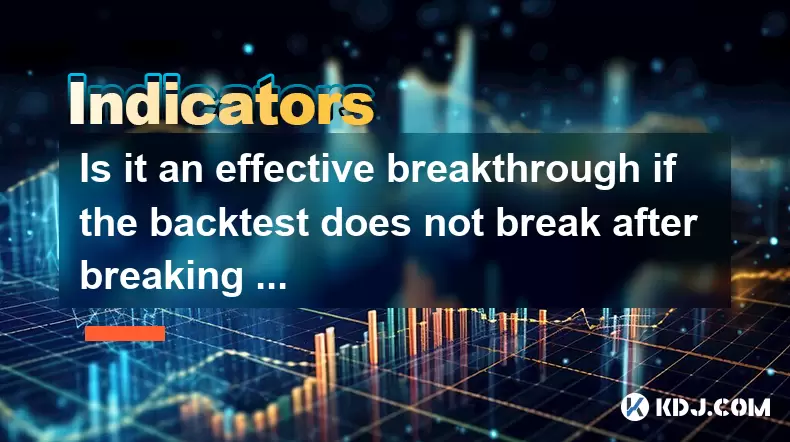
Is it an effective breakthrough if the backtest does not break after breaking through the neckline?
Jun 26,2025 at 10:08pm
Understanding the Role of Blockchain in Secure TransactionsBlockchain technology is at the heart of secure cryptocurrency transactions. Each block contains a list of transactions, and once recorded, altering past blocks becomes nearly impossible without network consensus. This immutability ensures that once a transaction is confirmed, it cannot be rever...
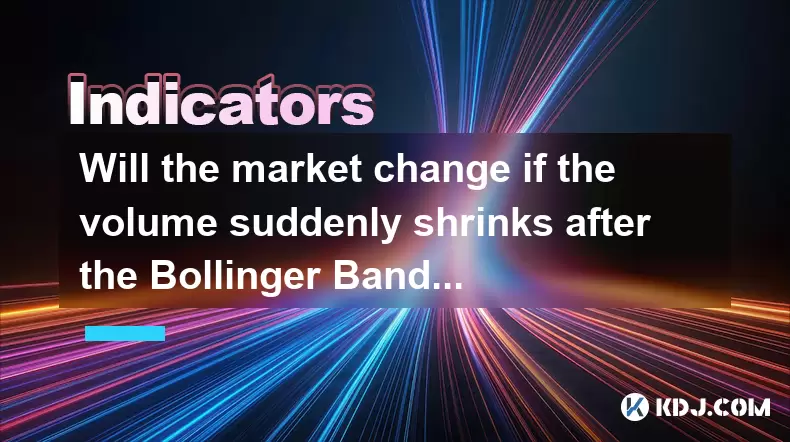
Will the market change if the volume suddenly shrinks after the Bollinger Bands open?
Jun 26,2025 at 09:56pm
Understanding the Bollinger Bands MechanismBollinger Bands are a widely used technical analysis tool that consists of a moving average and two standard deviation lines plotted above and below it. These bands dynamically adjust to price volatility, expanding during periods of high market activity and contracting when volatility decreases. Traders use thi...
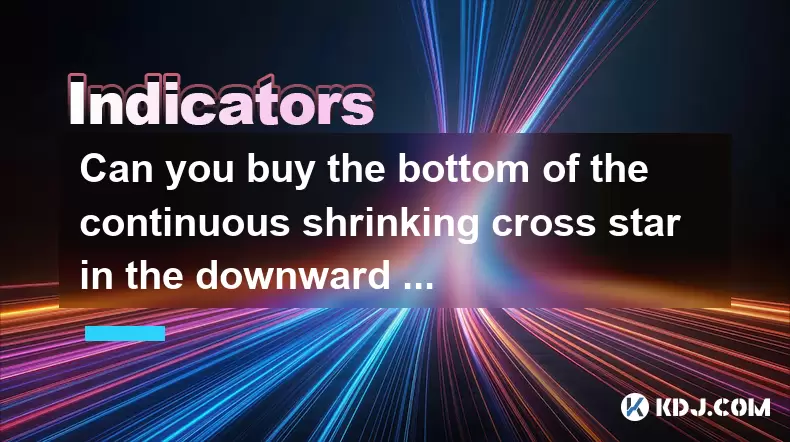
Can you buy the bottom of the continuous shrinking cross star in the downward trend?
Jun 26,2025 at 10:28pm
Understanding the Continuous Shrinking Cross Star PatternThe continuous shrinking cross star is a candlestick pattern that typically appears during a downtrend. It consists of multiple small-bodied candles with upper and lower shadows, indicating market indecision. Each subsequent candle in this pattern has a smaller body than the previous one, showing ...
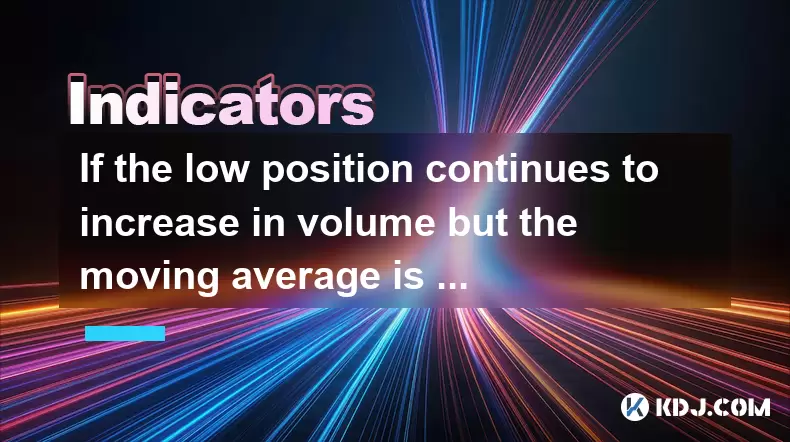
If the low position continues to increase in volume but the moving average is still short, should we wait and see?
Jun 26,2025 at 08:07pm
Understanding the Scenario: Low Position with Increasing VolumeIn the cryptocurrency market, traders often encounter situations where a particular asset is trading at a relatively low price level (referred to as a 'low position'), yet there is a noticeable increase in trading volume. This phenomenon can be confusing because it suggests that more market ...
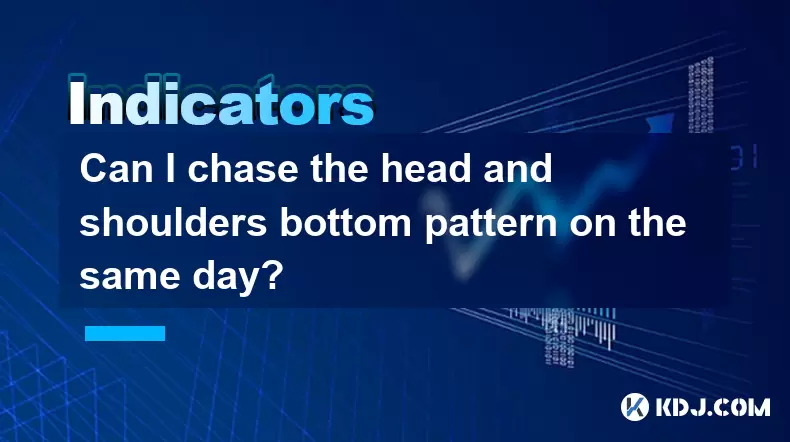
Can I chase the head and shoulders bottom pattern on the same day?
Jun 26,2025 at 06:14pm
Understanding the Head and Shoulders Bottom Pattern in Cryptocurrency TradingThe head and shoulders bottom pattern, also known as the inverse head and shoulders, is a reversal chart pattern commonly observed in cryptocurrency price charts. It signals a potential shift from a downtrend to an uptrend. The structure consists of three distinct lows: the lef...

What should I do if the 10-day line turns downward but the monthly line is still upward?
Jun 26,2025 at 08:56pm
Understanding the 10-Day and Monthly Moving AveragesIn cryptocurrency trading, moving averages are among the most widely used technical indicators. The 10-day moving average (MA) reflects short-term price trends, while the monthly moving average, often calculated over 30 days, represents long-term market sentiment. When the 10-day line turns downward, i...

Is it an effective breakthrough if the backtest does not break after breaking through the neckline?
Jun 26,2025 at 10:08pm
Understanding the Role of Blockchain in Secure TransactionsBlockchain technology is at the heart of secure cryptocurrency transactions. Each block contains a list of transactions, and once recorded, altering past blocks becomes nearly impossible without network consensus. This immutability ensures that once a transaction is confirmed, it cannot be rever...

Will the market change if the volume suddenly shrinks after the Bollinger Bands open?
Jun 26,2025 at 09:56pm
Understanding the Bollinger Bands MechanismBollinger Bands are a widely used technical analysis tool that consists of a moving average and two standard deviation lines plotted above and below it. These bands dynamically adjust to price volatility, expanding during periods of high market activity and contracting when volatility decreases. Traders use thi...

Can you buy the bottom of the continuous shrinking cross star in the downward trend?
Jun 26,2025 at 10:28pm
Understanding the Continuous Shrinking Cross Star PatternThe continuous shrinking cross star is a candlestick pattern that typically appears during a downtrend. It consists of multiple small-bodied candles with upper and lower shadows, indicating market indecision. Each subsequent candle in this pattern has a smaller body than the previous one, showing ...

If the low position continues to increase in volume but the moving average is still short, should we wait and see?
Jun 26,2025 at 08:07pm
Understanding the Scenario: Low Position with Increasing VolumeIn the cryptocurrency market, traders often encounter situations where a particular asset is trading at a relatively low price level (referred to as a 'low position'), yet there is a noticeable increase in trading volume. This phenomenon can be confusing because it suggests that more market ...

Can I chase the head and shoulders bottom pattern on the same day?
Jun 26,2025 at 06:14pm
Understanding the Head and Shoulders Bottom Pattern in Cryptocurrency TradingThe head and shoulders bottom pattern, also known as the inverse head and shoulders, is a reversal chart pattern commonly observed in cryptocurrency price charts. It signals a potential shift from a downtrend to an uptrend. The structure consists of three distinct lows: the lef...

What should I do if the 10-day line turns downward but the monthly line is still upward?
Jun 26,2025 at 08:56pm
Understanding the 10-Day and Monthly Moving AveragesIn cryptocurrency trading, moving averages are among the most widely used technical indicators. The 10-day moving average (MA) reflects short-term price trends, while the monthly moving average, often calculated over 30 days, represents long-term market sentiment. When the 10-day line turns downward, i...
See all articles
























































































